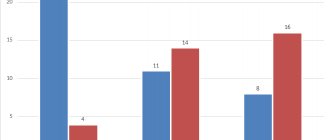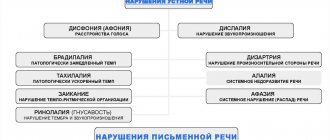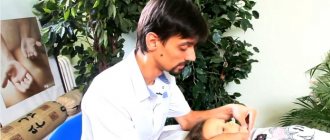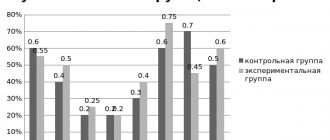Parents of kindergarten-aged children are concerned about how their child speaks, but mothers and fathers of schoolchildren have other problems. As soon as school begins, your child may experience difficulties with written speech. And very often this does not mean that your treasure is not gnawing too hard on the granite of science. Learning difficulties may be associated with speech disorders.
Written speech
Experts refer to written speech as the process of writing letters, words and text itself, as well as their reproduction “from a sheet of paper,” that is, reading. The formation of written speech is a conscious process, the result of targeted learning. Accordingly, some difficulties may arise in children due to imperfections in the psychological sphere - attention, perseverance, concentration, motivation to study. However, educational measures are not always the method of overcoming problems. Often, writing problems have more serious causes that do not depend on the diligence of your schoolchild.
In order for written speech to be formed correctly, several components are necessary:
- A developed system of mental factors - memory, thinking, attention, imagination, ability to self-control, analysis and synthesis.
- Developed motor skills, fine motor skills.
- Ability to perceive - visual, phonemic.
- Correct and well-developed oral speech.
The last point is by no means less significant. It is the level of development of oral speech that is the basis on which a new skill will be built. For this reason, it is extremely important to solve all possible speech therapy problems in a child before starting school.
Impaired writing can manifest itself in different forms, depending on the presence of certain problems. Contacting a speech therapist will help you cope with them and help your child succeed in school.
Speech therapist for schoolchildren
The problem and correction of specific disorders of written speech, i.e. dysgraphia has always been relevant.
Material from the site
The main task of a speech therapist at a school speech center is the timely identification and prevention of writing and reading disorders.
What is dysgraphia?
Dysgraphia is a partial disorder of the writing process, manifested in persistent, repeated errors caused by the immaturity of the higher mental functions involved in the writing process.
What should a teacher be wary of in students’ oral and written speech:
• incorrect pronunciation of sounds, which can subsequently cause dysgraphia and dyslexia;
• special nature of errors in writing:
- - errors are not the rule;
- persistent errors that do not disappear during the learning process;
- regularly repeated errors in various types of work, regardless of the child’s psychophysical state;
— distortion of graphic images of letters;
- omissions, rearrangements, additions of letters and syllables;
- mixing paired consonants in oral and written speech;
- gross agrammatisms in oral speech and writing.
The practice of working at a school speech center has shown that dysgraphia makes up a significant percentage of other speech disorders found among students in public schools. The causes of dysgraphia can be both unformed processes during learning and mildly expressed underdevelopment of speech. When identifying speech disorders and organizing remedial education for children entering school, signs of general speech underdevelopment often go unnoticed. Typically, dysgraphia caused by mildly expressed underdevelopment of speech is recognized only in the process of learning to write. What is a serious obstacle to students’ mastery of literacy at the initial stages of education, and at later stages to mastering the grammar of their native language.
The writing of dysgraphic children can be determined by the presence of two groups of specific errors:
1) errors
,
due to the immaturity of auditory attention and phonemic processes:
a) omission of letters and syllables - “passed” (forgave), “greedy” (greedy), “ishka” (toy);
b) rearrangement of letters and syllables - “onko” (window), “zvyal” (took), “peperisal” (rewrote), “natuspila” (stepped);
c) underwriting of letters and syllables - “delo” (did), “lopat” (shovel), “nabukhl” (swelled);
d) building up words with extra letters and syllables - “tarawa” (grass), “katorai” (which), “bababushka” (grandmother), “klyukikva” (cranberry);
e) distortion of the word - “naotukh” (to hunt), “habab” (brave), “pike” (cheeks), “specky” (from a stump);
f) continuous writing of words and their arbitrary division - “nasto” (one hundred), “visitnastne” (hanging on the wall), “u stala” (tired);
g) inability to determine the boundaries of a sentence in a text, writing sentences together - “My father is a driver. The work of a driver is difficult; the driver needs to do well. Know the car after school too. I’ll be the driver”;
h) replacing one letter with another - “trick” (three); “u glesta” (crossbill), “telpan” (tulip), “shapagi” (boots);
i) violation of softening of consonants - “vaselki” (cornflowers), “smali” (crumpled), “kon” (horse).
2) errors caused by the immaturity of the lexical and grammatical aspects of speech:
a) agrammatism - “Sasha and Lena are picking flowers. The children sat on large chairs. Five little yellow chickens” (five little yellow chickens);
b) continuous writing of prepositions and separate writing of prefixes - “in the pocket”, “while flying”, “in the village” (took), “on the road”.
Thus, dysgraphia, based on the type of errors it produces, is divided into the following types:
- Acoustic
Articulatory-acoustic
A speech therapist in the practice of a comprehensive school often has to deal with mixed types. But the following manifestations of speech problems in students predominate.
- Articulatory-acoustic dysgraphia,
Material from the site
which is characterized by
the replacement of letters corresponding to phonetically similar sounds,
i.e. similarity in acoustic-articulatory characteristics:
- voiced - voiceless (B-P; V-F; D-T; Zh-Sh, etc.),
- whistling - hissing (S-SH; Z-Z, etc.),
- affricates and components included in their composition (CH-SH; CH-TH; C-T; C-S, etc.).
- Incorrect designation of the softness of consonants in writing: “pismo”, “lubit”, “hurt”, etc.
To overcome this type of dysgraphia, there is only one reliable way - the development of clear auditory differentiation of sounds that are not distinguishable by ear. Until this is achieved, the child will continue to write at random. Therefore, it is necessary by any means to bring to his consciousness the difference in the sound of sounds by emphasizing it as clearly as possible. For this purpose, at the first stage, it is most convenient to identify these sounds with the sounds of the surrounding nature or familiar objects.
Subsequently, the child is offered a wide variety of exercises aimed at distinguishing these sounds.
For example:
• the child naming words with the sounds Ш and С;
• showing the letter Ш or С in response to a word with the corresponding sound pronounced by an adult;
• the child’s naming of the missing letter Ш or С in a word (kry(sh)a, kry(s)a,) s. Such exercises are also carried out in written form. Teddy bear - bowl, roof - rat
• laying out pictures under the letters Ш and С, the names of which contain the corresponding sounds.
When working to overcome articulatory-acoustic dysgraphia, special attention should be paid to the development of auditory differentiation of hard-soft and voiced-voiceless consonants. The lack of such differentiation not only leads to letter substitutions in writing, but also prevents the acquisition of a number of grammatical rules.
In particular, a child who does not differentiate soft and hard consonants by ear will not be able to master the rules for indicating soft consonants in writing - he will always be doubtful whether it is necessary to write a soft sign in words like DAY and DAYS
and which letter (A or Z) should be written, for example, after L in the word LAMP.
To solve this problem, you can perform the following exercises:
- read the words, write them in the singular.
Example: horses - horse
Steppes –
Ate -
Doors –
Carp –
- read the words, write down their diminutive meaning.
Sample: day - days
Coal -
Perch –
- sort the pictures according to the presence of vowels written on the houses
The same is true with voiced and voiceless consonants. If a child does not distinguish them by ear, then he will not be able to master the spelling rule of “doubtful consonants” at the end and in the middle of words (in words like MUSHROOM and MUSHROOM), as well as the spelling rule of many prefixes (in words like RUN and SIGN).
Even having changed the word MUSHROOM so that the dubious consonant is clearly audible (MUSHROOMS), the child will still not get rid of doubts when writing it, since he will not be able to perceive any difference in the sounds of MUSHROOMS and GRIPY.
All work done with the child on auditory differentiation of sounds must be accompanied by written exercises.
Material from the site
Dysgraphia due to a violation of language analysis and synthesis is associated with the fact that the child finds it difficult to isolate some individual words in a continuous stream of oral speech and then divide these words into their constituent syllables and sounds. And without a clear orientation in the sound composition of words, the corresponding letter cannot be selected to denote each specific sound, much less determine their order. As a result, correct writing of words, not to mention phrases, becomes impossible:
- omissions of letters and syllables;
- rearrangement of letters and (or) syllables;
- not completing words;
- writing extra letters in a word
- repetition of letters and (or) syllables;
- continuous writing of prepositions, separate writing of prefixes (“on the table”, “on stepped”).
First of all, you need to teach your child to divide each sentence into separate words and correctly determine their number. In this case, special attention should be paid to prepositions and conjunctions, which are also independent words and therefore are written separately from significant words. For clarity, you can use graphic diagrams of sentences that reflect the number of their constituent words.
- come up with a proposal based on a given graphic scheme;
- make a graphic diagram of this proposal
- (for example: Children are playing.);
- determine the place of each word in a sentence (which one?)
I would especially like to dwell on the importance of dividing words not only into sounds, but also into syllables. Although in general our writing is letter-sound, the unit of reading and writing in Russian is the syllable
. Thus, it is impossible to read the consonant letter P, T, K or any other letter in isolation, without taking into account the vowel that follows it, since it is not known whether it should be pronounced softly or firmly when reading (PA or PY?). Accordingly, in the process of writing in these cases, we must also have in mind the whole syllable at once, since the softness or hardness of the consonant here must be indicated using the subsequent vowel letter.
Material from the site
For this purpose, it is good to conduct exercises on dividing words into syllables with detailed analysis, for example:
- pronounce the words syllable by syllable while clapping your hands,
- name the first syllable, then the second, the third;
show the syllables on the diagram.
Or
- name the vegetables;
- divide words into syllables;
- indicate with an arrow which basket the vegetables should be placed in;
- Explain why?
When the child mastered dividing words into syllables
, you need to teach your child to divide words into syllables and
sounds
.
The following audio analysis tasks are offered:
- determine the number of sounds in a word
- (how many sounds are in words
BALL, BUG, WHALE, SPIDER, FLY, etc.);
- complete the missing cells;
- divide into syllables
- determine the sequence of sounds in a word (which sound is the first
- first, second, third, fourth in the word SPIDER?);
- determine the place of a sound in a word.
To divide words into syllables, a child must, first of all, be able to distinguish between vowels and consonants and identify vowel sounds in a word. For this purpose, you can offer tasks:
- naming only vowel sounds in a word (U and A in the word DUCK),
- inventing words with a certain vowel sound, etc.
And only after the child learns to find vowel sounds without difficulty, can he be told the well-known rule: “as many vowels in a word, so many syllables.”
For sound-letter analysis of words, students always have a tape of sounds and letters
like in the office of every primary class,
and in the speech therapy room.
Timely identification and elimination of oral speech deficiencies in students, as well as special training in preparation for school and from the first days of school, will help prevent failure in writing in this category of children. Therefore, the speech therapist at the speech therapy center assigns a special role to correctional work in the checkpoint and 1st grades.
Material from the site
In our school, CAT, 1st and 2nd grade students make up 80 percent of the total number of children enrolled in speech therapy classes. The successful implementation of correctional work depends on the contact of the speech therapist with primary school teachers. The result of the final survey for the 2010-2011 academic year showed that 56.2% of students who attended a speech therapy center increased their level of mastery of language components.
The interaction of primary school teachers and a speech therapist helps students overcome problems in mastering writing skills and make educational work for children joyful creativity!
List of used literature:
- Efimenkova L.N.
“Correction of oral and written speech of primary school students” - M., 2001.
Dyslexia
If your child has difficulty learning to read, he or she may have dyslexia.
It is characterized by:
- Letters in words are read incorrectly (merging with subsequent/previous ones, “swallowing”, substitutions).
- The accents are placed in the wrong place.
- The word is not read to the end.
- During the reading process, words are skipped or rearranged, lines are lost, and transition from one line to another is difficult.
As a rule, dyslexia is associated with speech hearing impairment. It is difficult for a child to distinguish sounds that are similar in pronunciation. Important factors are also the sufficient development of the ability to analyze and synthesize, maintain attention and accuracy of perception.
What it is
Dysgraphia is a violation of written speech skills when partial difficulties arise in mastering writing. Characteristic signs are persistent, repeated errors in writing that are not related to the acquisition of spelling norms.
Dyslexia is a disorder in the development of reading skills. It is associated with difficulties in the formation of speech components and improper operation of analyzer systems.
Some experts believe that these disorders are not just pathologies, but a gift that you need to know how to use. They are not an indicator of low intelligence - these difficulties can occur in children with normal mental development. During diagnosis, it is important to determine whether it is dysgraphia and dyslexia, or physiological errors that are the norm when learning written language.
Dysgraphia
Constant errors in writing, not related to knowledge of spelling rules, are a characteristic feature of dysgraphia. These mistakes are illogical and even unexpected for teachers and parents. “Cow” can turn into “krova”, “April” into “atrel”, letters are turned upside down, and words in a separate sentence are not connected to each other.
Edifications, traditional activities with the child and even punishment cannot lead to results. The whole point is that dysgraphia does not arise from the child’s disobedience, but due to the insufficient formation of higher mental functions and violations of various components of speech.
Violations we can help you deal with
The most common types of disorders are dysgraphia and dysorthography. Dysgraphia is numerous repeated errors in mastering writing techniques. The child makes mistakes in the same words even after repeated corrections. There are mistakes even when copying from printed text: the child replaces letters, syllables and words, loses and adds extra spaces between words. There are usually more errors at the end of the text than at the beginning. In most cases, the abundance of errors is due to mental development disorders. The diagnosis is made at 8-8.5 years.
Dysorthography is the inability to apply spelling rules. A child can remember how to spell a word correctly, but cannot explain its spelling. Because of this, the child often makes spelling mistakes. This problem is typical for children of primary school age, but also occurs in older students.
We also help preschool children who have difficulties with writing due to problems with memorizing the alphabet, transitioning to written letters, as well as reading and oral language disorders.
Articulatory-acoustic dysgraphia
This option occurs when there are problems with sound perception and pronunciation of sounds. That is, the child “writes what he hears.”
- arbitrarily uses voiced and voiceless consonants in writing, changing their places;
- alternates between whistling and hissing sounds;
- skips a soft sign;
- mixes affricates and their components;
- randomly changes vowels of the first and second rows.
The problem cannot be solved until the speech therapist establishes the correct articulation of all sounds and masters phonemic hearing skills.
For example: “cat” - “koska”, “swing” - “rollers”.
Speech therapy help for dysgraphia
The child must form a word from letters
Exercises to correct writing disorders should be selected depending on the form of the defect. If there is a speech disorder (dysarthria, alalia, etc.), it is necessary to correct it. Sometimes a complex intervention with the participation of a neurologist and neuropsychologist is needed.
- If this is an acoustic form, during lessons the child is offered tasks for correcting phonemic hearing (distinguishing sounds in the speech stream, analyzing the acoustic characteristics of phonemes - similarities and differences, working with paronymous words). They offer tasks to determine the number of sounds in a word and their place.
- If it is articulatory-acoustic dysgraphia, articulation exercises are included in the classes. A more detailed analysis of articulation is carried out with the child. If there are violations of sound pronunciation, mandatory correction is required.
- To correct optical-spatial dysgraphia, they are taught to distinguish between right and left, up and down. They are given tasks to place letters or shapes on sheets of different formats according to verbal instructions. A detailed analysis of the letter: what elements it consists of, in what order to write them. Work is also underway to correct phonetic-phonemic processes.
Also, for any form of writing disorder, in classes the child is asked to lay out letters from scrap materials, sculpt them from plasticine or salt dough. They use the technique of “air writing”: they write letters in the air with their hands; at the initial stages, you can pronounce the writing of the elements. Exercises to improve coordination of movements and develop finger motor skills are required.
Dysgraphia agrammatic
In this case, during writing, the grammatical structure of speech is disrupted:
- the connection between words in a sentence is disrupted, phrases are not consistent with each other;
- nouns are put in the wrong number, case or gender;
- prefixes and suffixes are replaced;
- the structure of the sentence itself changes.
The problem becomes noticeable in the 3rd grade, when mastery of grammar becomes a prerequisite for learning. Parents should be careful.
Example: “Beautiful car”, “Katya and Lena are driving a car”.
Classification of dyslexia
In modern speech therapy there are a large number of classifications of reading disorders. One of the most frequently used is the one proposed by R.I. Lalaeva. She created it taking into account reading disorders:
- With insufficient development of phonemic and phonetic-phonemic processes, a phonemic form of dyslexia appears. The student does not have a clear sound image of the letter. This manifests itself in the replacement and mixing of letters during reading. There may also be a violation of the syllabic structure of the word.
- Optical dyslexia is caused by insufficient development of the visual analytical system and optical-spatial representations. While reading, the student makes mistakes in letters that have similar optical characteristics. He has difficulty mastering the visual image of a letter and the arrangement of elements.
- The mnestic form is associated with the complexities of speech memory processes, manifested in the correlation of phoneme and letter images. A child cannot remember a letter and its components for a long time.
- When a child reads but does not understand the meaning of what he read, this is a manifestation of semantic dyslexia, also known as rote reading. A student may have an ideal reading technique, but he cannot establish semantic connections between words. Or if he reads syllable by syllable, he cannot understand what word he is talking about and cannot correlate it with a suitable picture.
- When the grammatical structure of speech, morphological and syntactic categories is insufficiently formed, an agrammatic form appears. Its characteristic features are incorrect endings, violation of word agreement norms, difficulties in word formation; incorrect accent placement.
- The tactile form is caused by a malfunction of the spatial analyzing system. This dyslexia can only occur in blind children who use Braille.
The described forms are rarely found in their pure form. Usually it is a combination of several types. And you need to select exercises to eliminate all errors that arise during reading.
Optical dysgraphia
Letters consist of a certain set of elements - hooks, sticks, circles, ovals, etc. If there are problems with visual-spatial perception, the process of analysis and synthesis, schoolchildren may experience typical errors:
- letters are written in mirror image;
- extra elements appear in the letters (“porridge” - “kashshsha”);
- the details of the letters “come off” from each other or a gap appears between the written
- letters in one word;
- visually similar letters are replaced (v - d, t - p, i - sh).
Speech therapy help for dyslexia
Tasks are selected in accordance with the form of reading impairment. Correction is carried out in the following areas:
- correction of sound pronunciation;
- working with the syllabic structure of a word;
- work on the development of phonetic-phonemic processes;
- overcoming agrammatisms.
They offer tasks for recognizing the image of a letter in “noisy” images. The speech therapist together with the child draws up sentence diagrams. Asks to identify the sound in a word while showing an image. Then he pronounces the sounds with a pause and asks to name the spoken word.
In addition, they offer to add the missing syllable or letter. Or perform the action you read and point to the appropriate picture. During lessons, students are asked to work with various fonts to form a visual image of a letter.
In modern speech therapy, dysgraphia and dyslexia continue to be studied and effective ways to correct them are selected. Some experts believe that this is a gift, people just need to learn how to use it. But this does not mean that there is no need to correct writing disorders. If the correction was started on time, the parents and the child follow all the recommendations of specialists, the student will be able to master writing and reading without much difficulty.
Dysgraphia that occurs when the processes of analysis and synthesis are disrupted
This option occurs quite often, so parents need to pay attention if the child regularly repeats errors of this kind:
- syllables and individual syllables are swapped or omitted altogether (“doll” - “kulka”, “cook”, etc.);
- words are not completed;
- additional letters appear in words (“machine” - “maashina”);
- prepositions are written together with words, and prefixes, on the contrary, are written separately;
- In words, individual syllables from neighboring words are mixed up.
Let us repeat, the point here is not that the child is not trying hard enough or is not doing his homework diligently enough. Dysgraphia problems have deeper roots. The child definitely needs the help of a speech therapist.
Correct diagnosis of the condition and timely corrective measures can correct the situation and add positive grades to the diary and motivation to study.
Diagnostic features
The school speech therapist conducts diagnostics at the beginning of the school year and at the end. But a specialist diagnoses dyslexia or dysgraphia only in the second grade. Because in the first year of schooling, children may have physiological errors, and the goal of speech therapy assistance in the first grade is maximum correction of the sound-pronunciation side of speech.
To check the development of written speech, the speech therapist uses the regular and split alphabet. It tests the student’s recognition of the visual image of a letter and the ability to divide it into elements. The speech therapist evaluates the work of phonetic-phonemic processes - this is the discrimination of phonemes by ear, proficiency in sound-letter analysis.
A specialist must check the sound pronunciation aspect of speech and syllable structure. The speech therapist pays attention to the state of the motor sphere, especially spatial orientation and coordination of movements; whether the child has developed fine differentiated finger movements. Checks how the student navigates on a sheet of paper, whether he distinguishes similar shapes and elements of letters.
The speech therapist asks the child to read printed and capital letters. Gives dictation by ear, copying. It also looks at the student's reading comprehension. In addition, diagnostics of the formation of higher mental functions is carried out. Based on the diagnostic results, a corrective work plan is drawn up.
Basic principles of the dysgraphia correction program for primary schoolchildren
The dysgraphia correction program should be based on the following principles: systemic, complex, ontogenetic, general didactic (accessibility, awareness, visibility, individual approach, awareness). The main place in the correction program is occupied by practical techniques:
- constructive - used to clarify optical-spatial differentiations (for example, this can be the construction of different letters from individual elements, or from one letter to another);
- creative - work on the formation of sound-letter analysis and synthesis.
The correction program for eliminating dysgraphia provides three levels of correction: lexical, phonetic and syntactic. Usually, at the beginning of the course, an introductory conversation is scheduled, a parent meeting and a dictation are held. At the end of the course, there is a conversation with parents, a final dictation, and a summing up (assessment of the dynamics of overcoming dysgraphia.
It is worth noting that most children with problems with written language have difficulties with time orientation: they have very poor knowledge of the basic units of time (months, seasons, days of the week and sequence); they have not developed the generalization of spatial representations and concepts, difficulties arise in the kinetic and dynamic organization of hand movements; clear connections between the auditory analyzer and the motor system are not sufficiently formed. Clarification and development of these functions should be carried out in every lesson.
- Correction of dysgraphia at the phonetic level involves solving a number of problems: the development of sound synthesis and analysis of words (the transition from simpler forms to complex ones) and the improvement of phonemic perception (differentiation of phonemes that have similar characteristics). The correction program involves preliminary work in groups to clarify optical-spatial concepts and subsequent independent work at home using speech therapy cards. Also, as homework, children are asked to do exercises to develop the differentiation of letters, which are mixed according to voiced and voiceless.
- Elimination of dysgraphia at the lexical level involves achieving such tasks as quantitative growth of the vocabulary (this is achieved by mastering new words, as well as their meanings), qualitative replenishment of the vocabulary (the child’s assimilation of emotional and semantic shades of the meanings of different words, their figurative meaning); understanding the synonymy and antonymy of words, the formation of a culture of speech (elimination from it of slang words, vernacular, parasitic words).
- At the syntactic level, correctional work involves enriching phrasal speech, consciously constructing sentences, and children mastering the compatibility of words in a sentence.
The first stage of dysgraphia correction
At the first stage of correctional work, students’ attention is drawn to the work of the articulatory apparatus in order to make it as controllable as possible; children are also taught to evaluate muscle sensations while pronouncing sounds and words, as well as to associate their sensations with acoustic stimulation. To do this, it is necessary to practice the articulation of first row vowels and consonants, even if their pronunciation usually does not suffer. Exercises aimed at recognizing and isolating sounds from words are carried out based on pronouncing in a loud voice, and then pronouncing words in a normal voice. Afterwards, the child proceeds to perform the exercise silently.
Also, during correctional work, the child should understand the relationship between the letter and the sound. Subsequent speech therapy work is aimed at developing sound-letter synthesis and analysis. Great importance is given to the differentiation of letters that have kinetic similarity or the same number of elements (p-t, l-m, i-sh, i-shch), similar in spatial arrangement of elements (b-d, v-d, y- h, g-r).
Work begins with optical-spatial differentiation, for which the child needs to perform actions with geometric shapes, pictures, perform exercises with constructing letters using counting sticks, guessing isographs, guessing letters. The main task of a speech therapist is to teach children to identify specific features that allow them to distinguish mixed letters from each other.
Such work should be carried out without absences at each lesson in its organizational part. After completion, children are given individual lessons to study on cards to take home. Also, during correctional classes, active work is carried out to distinguish between phonemes that have acoustic-articulatory similarities (primarily this concerns vowels of the 1st and 2nd rows). The work at the first stage ends with children distinguishing consonant sounds. To do this, the speech therapist gives them the concept of deaf and voiced sounds, compares them, explains their differences and similarities.
The second stage of dysgraphia correction
The second stage of correction of dysgraphia in younger schoolchildren begins with clarification and subsequent expansion of the children’s vocabulary. At this stage, the speech therapist should familiarize children with the synonymy and antonymy of words, without naming these phenomena, but explaining their essence in detail. Then the specialist clarifies the children’s understanding that words consist of sounds that merge into syllables. Then the students begin to master the structure of the word, for which they first rely on the rhythmic pattern of the word and its graphic representation, which is supported by the syllabic role of vowels. Also at this stage of correctional work, important attention is paid to isolating vowel sounds (stressed and unstressed) from words.
The third stage of dysgraphia correction
At the third stage of dysgraphia correction, the speech therapist moves on to working on a simple sentence. While performing various exercises, children learn to understand the syntactic basis of a sentence. As a result, they lay the foundation for mastering the skills of syntactic parsing of sentences at subsequent stages of learning. Also, in parallel, work is underway on the grammatical design of the sentence. In classes, a speech therapist teaches a child with dysgraphia to correctly coordinate parts of speech.
Of no small importance at the third stage of dysgraphia correction is the study of prepositions. At the same time, work is carried out exclusively with those prepositions that are not used in students’ oral speech or are mixed with others (for example, this could be replacing the preposition “from” with the preposition “with”). When analyzing prepositions, the student’s understanding of the spatial meaning of prepositions is first worked out, after which their meanings are learned. Also, in parallel, classes should include tasks that reinforce the child’s understanding of the separate writing of prepositions and words.
The speech therapist also focuses on activities whose main goal is the formation of coherent speech. First, children learn to retell the text, then compose stories using several pictures, according to a plan, using one plot picture, using supporting words. Moreover, at this stage, as at the previous two, it is extremely important that the child gradually enriches his vocabulary. The speech therapist must take this into account when preparing a lesson and selecting exercises.
In some children with mixed problems of written speech, some non-speech processes (auditory and visual attention, thinking, memory) may remain unformed, therefore, throughout the course of correction, the speech therapist should include in classes tasks aimed at their development. To overcome dysgraphia and achieve set goals, various games are actively used: while working on identifying vowel sounds - active and didactic games with a ball; to develop skills of analysis and synthesis - didactic games (“Pyramid”, “Toy Store”).
At all stages of written speech correction, it is effective to use speech therapy games. Important attention should be paid to such a technique as modeling: during the formation of language analysis and synthesis (at the level of sound, syllable, sentence), when working on stress, when differentiating vowels. Speech therapists also actively use visual and verbal methods of influence (stories, conversations, explanations).








